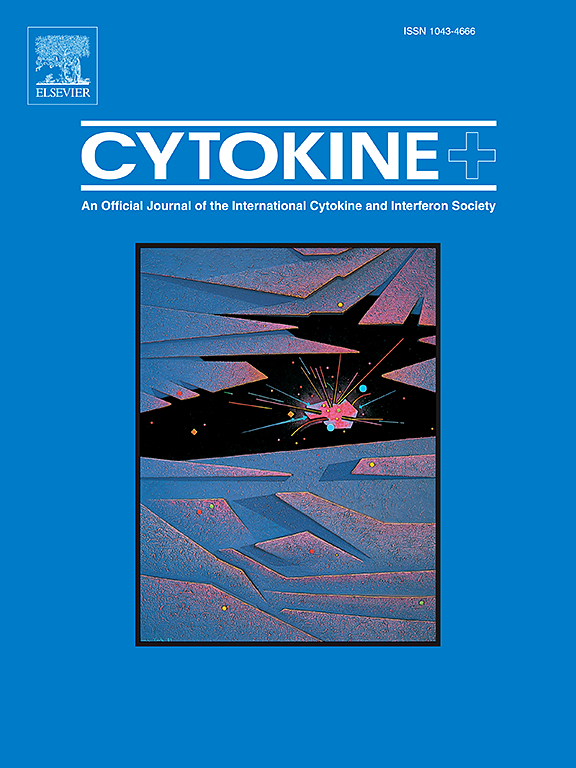Experimental and computational studies of IL-6 signaling in endothelial cells under hypoxia serum starvation conditions
IF 3.7
3区 医学
Q2 BIOCHEMISTRY & MOLECULAR BIOLOGY
引用次数: 0
Abstract
Many diseases associated with angiogenesis involve inflammatory cytokine mediated responses. Targeting angiogenesis as a predominant strategy has shown limited effects in many contexts including peripheral arterial disease (PAD). One potential reason for the unsuccessful outcome is the interdependence between inflammation and angiogenesis. Inflammation-based therapies primarily target inflammatory cytokines such as interleukin-6 (IL-6) in T cells, macrophages, cancer cells, muscle cells. However, the mechanism of how these cytokines act on endothelial cells under PAD-specific hypoxia serum starvation (HSS) conditions are not well understood. Thus, we focus on one of the major inflammatory cytokines, IL-6, mediated intracellular signaling in endothelial cells under HSS conditions by conducting relevant in vitro experiments on human umbilical vein endothelial cells (HUVECs) and developing an experimentally validated computational model. Our model quantitatively characterized the effects of IL-6 classic and trans-signaling in activating the signal transducer and activator of transcription 3 (STAT3), phosphatidylinositol 3-kinase/protein kinase B (PI3K/Akt), and mitogen-activated protein kinase (MAPK) signaling to phosphorylate STAT3, extracellular regulated kinase (ERK) and Akt, respectively in endothelial cells under HSS condition. The trained and validated experiment-based computational model was used to characterize the dynamics of phosphorylated STAT3 (pSTAT3), Akt (pAkt), and ERK (pERK) in response to IL-6 classic and/or trans-signaling under HSS conditions. The model predicts that IL-6 classic and trans-signaling induced responses are dose dependent. In addition, IL-6 trans-signaling induces greater downstream signaling responses compared to classic signaling and plays a dominant role in the overall effects due to a tighter binding of the ligand and receptors and an abundant supply of soluble receptor sIL-6R because of the experimental setting. Moreover, our model identifies the species and kinetic parameters that specifically have a significant impact on the phosphorylation of STAT3, Akt, and ERK, which represent potential targets for the inflammatory cytokine mediated signaling and angiogenesis-based therapies under HSS conditions. Overall, the model predicts the effects of IL-6 classic and/or trans-signaling stimulation under HSS condition quantitatively and provides a framework for analyzing and integrating experimental data. More broadly, this model can be applied to identify potential targets that influence inflammatory cytokine mediated signaling in endothelial cells under HSS conditions and to investigate the effects of angiogenesis- and inflammation-based therapies specific to PAD.

低氧血清饥饿条件下内皮细胞IL-6信号传导的实验与计算研究
许多与血管生成相关的疾病都涉及炎症细胞因子介导的反应。靶向血管生成作为主要策略在包括外周动脉疾病(PAD)在内的许多情况下显示出有限的效果。结果不成功的一个潜在原因是炎症和血管生成之间的相互依赖。基于炎症的治疗主要针对炎症细胞因子,如T细胞、巨噬细胞、癌细胞、肌肉细胞中的白细胞介素-6 (IL-6)。然而,这些细胞因子在pad特异性缺氧血清饥饿(HSS)条件下如何作用于内皮细胞的机制尚不清楚。因此,我们通过对人脐静脉内皮细胞(HUVECs)进行相关的体外实验,并建立实验验证的计算模型,关注HSS条件下内皮细胞中主要炎症因子之一IL-6介导的细胞内信号传导。我们的模型定量表征了IL-6经典信号传导和反式信号传导在HSS条件下内皮细胞中分别激活转录信号转换器和激活因子3 (STAT3)、磷脂酰肌醇3-激酶/蛋白激酶B (PI3K/Akt)和丝裂原活化蛋白激酶(MAPK)信号传导以磷酸化STAT3、细胞外调节激酶(ERK)和Akt的作用。使用经过训练和验证的基于实验的计算模型来表征HSS条件下磷酸化STAT3 (pSTAT3)、Akt (pAkt)和ERK (pERK)对IL-6经典信号和/或反式信号的响应动态。该模型预测IL-6经典和反式信号诱导的反应是剂量依赖性的。此外,与经典信号传导相比,IL-6反式信号传导诱导了更大的下游信号传导反应,并且由于配体和受体的结合更紧密,以及实验环境中丰富的可溶性受体sIL-6R的供应,IL-6反式信号传导在整体效应中起主导作用。此外,我们的模型确定了对STAT3、Akt和ERK磷酸化有显著影响的物种和动力学参数,它们代表了HSS条件下炎症细胞因子介导的信号传导和基于血管生成的治疗的潜在靶点。总体而言,该模型定量预测了HSS条件下IL-6经典和/或反式信号刺激的影响,并为分析和整合实验数据提供了框架。更广泛地说,该模型可用于识别HSS条件下影响内皮细胞炎症细胞因子介导的信号传导的潜在靶点,并研究针对PAD的血管生成和炎症治疗的效果。
本文章由计算机程序翻译,如有差异,请以英文原文为准。
求助全文
约1分钟内获得全文
求助全文
来源期刊

Cytokine
医学-免疫学
CiteScore
7.60
自引率
2.60%
发文量
262
审稿时长
48 days
期刊介绍:
The journal Cytokine has an open access mirror journal Cytokine: X, sharing the same aims and scope, editorial team, submission system and rigorous peer review.
* Devoted exclusively to the study of the molecular biology, genetics, biochemistry, immunology, genome-wide association studies, pathobiology, diagnostic and clinical applications of all known interleukins, hematopoietic factors, growth factors, cytotoxins, interferons, new cytokines, and chemokines, Cytokine provides comprehensive coverage of cytokines and their mechanisms of actions, 12 times a year by publishing original high quality refereed scientific papers from prominent investigators in both the academic and industrial sectors.
We will publish 3 major types of manuscripts:
1) Original manuscripts describing research results.
2) Basic and clinical reviews describing cytokine actions and regulation.
3) Short commentaries/perspectives on recently published aspects of cytokines, pathogenesis and clinical results.
 求助内容:
求助内容: 应助结果提醒方式:
应助结果提醒方式:


